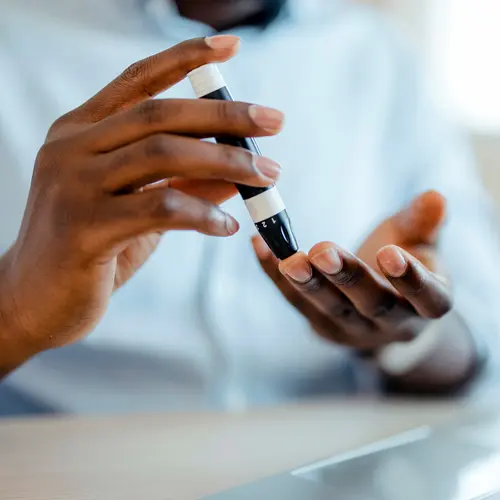More than 9 out of 10 people with diabetes have type 2. It used to be called adult-onset diabetes because it was rarely diagnosed in children.
Age is a big risk factor for type 2. The older you are, the more likely you are to have it. That also holds true for preteens and teenagers, whose diabetes rates have climbed sharply in recent years.
Age of Onset
Type 2 is a disease caused by a mix of your genes and your lifestyle. Being overweight, having high blood pressure, and not exercising all raise your chances for type 2.
You can have diabetes for years and not know it. Symptoms like thirst, peeing more often, blurry eyesight, and tingling hands and feet may come on slowly without your noticing.
Middle age is when diabetes diagnoses really start to spike. An estimated 14% of Americans ages 45 to 64, or 11 million people, are diagnosed with type 2. That’s almost five times the rate for those 18 to 44.
Diabetes rates jump even higher at the onset of your senior years. Almost 25% of Americans 65 and older have been diagnosed with type 2. Undiagnosed cases may account for another 4.7%. That means more than 1 of every 4 oldest Americans lives with type 2 diabetes.
The disease also is affecting ever more teens and even children. In 2002, 8 out of 100,000 adolescents were diagnosed with type 2 between the ages of 10 to 14. A decade later, the rate was 50% higher, or 12 per 100,000 youths.
Researchers believe childhood obesity and lack of exercise are among the reasons behind that trend. Doctors now screen kids as young as 10 for diabetes if they’re overweight or have other risk factors for the disease.
Risks by Age
Your age at onset of type 2 diabetes may affect the outlook for your long-term health. And your diabetes treatment plan may change as you get older.
There’s an inverse relationship between potential harm from diabetes and age at diagnosis. The younger you are when it happens, the bigger the possible harm.
Compared to those who were diagnosed later, research found that people who had type 2 before they turned 40 were more likely to have:
- Quicker damage to insulin-making cells called beta cells
- More complications, mainly because they live with the disease longer
- Shorter life spans
As you age, you’re more likely to have multiple medical conditions, including high blood pressure and high cholesterol. That can make it harder for you to keep your diabetes under control.
In turn, diabetes can lead to other health problems such as heart disease.
Low blood sugar, called hypoglycemia, is more common in older adults with diabetes. Symptoms such as dizziness, confusion, and weakness might worsen as you age.
What You Can Do
Type 2 diabetes doesn’t have to be a normal part of aging.
Some risk factors for the disease are things you can’t change. They include if your mother had gestational diabetes during their pregnancy, if diabetes runs in your family, and if you’re African American, Asian American, Native American, or Latino.
But healthy habits can go a long ways to prevent diabetes, keep it under control, and even reverse it. Steps you can take include:
- Lose extra weight, especially if you carry a lot of belly fat.
- Move your body. Aim for at least 30 minutes of physical activity like walking every day, 5 days a week.
- Eat healthy. Cut back on sugar, salt, processed packaged foods, and saturated fats from meats. Load up on dark leafy vegetables, fresh fruit, whole grains, and lean protein.
- If you smoke, quit.

